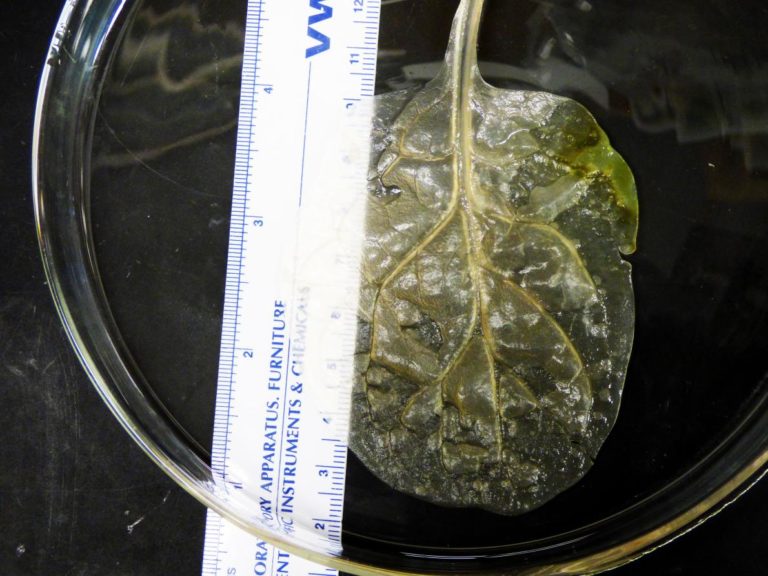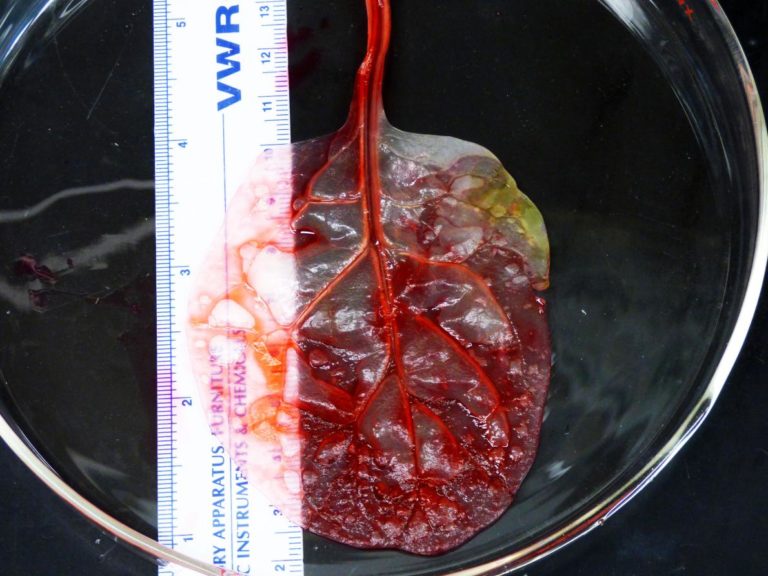
This mind-blowing breakthrough may one day aid in tissue regeneration.
A new study reveals how a vascular system may be grown from a common green most people eat for dinner. Published by the journal Biomaterials earlier this month, the information shows how scientists were able to successfully build a working human heart muscle from spinach.
According to National Geographic, the newfound ability to grow a vascular system will further developments in tissue engineering. This is because scientists have already created large-scale human tissue using methods such as 3D printing, but until recently, were unsuccessful at developing small, delicate blood vessels that are imperative for tissue health.
One of the study’s co-authors, Joshua Gershlak of Worcester Polytechnic Institute (WPI), described the study:
“The main limiting factor for tissue engineering … is the lack of a vascular network. Without that vascular network, you get a lot of tissue death.”
In a plant leaf, water and nutrients are moved through a branching network of thin veins. Because this process is similar to how blood moves through human veins, the leafy green was used for this study. However, as the authors note in their paper,
“Cellulose is biocompatible [and] has been used in a wide variety of regenerative medicine applications, such as cartilage tissue engineering, bone tissue engineering, and wound healing.”
It’s because of this that plant cells were removed from the leaf, leaving behind a cellulose framework. The team then bathed the plant frame in live human cells so that the human tissue attached to the “spinach scaffolding” and surrounded the tiny veins. Once the leaf was transformed into a mini heart, both fluid and microbes were sent through its veins to show that blood cells are capable of flowing through the system.
In addition to spinach leaves, the team also removed cells from parsley, sweet wormwood and hairy roofs of peanuts. According to the researchers, however, the spinach leaf is likely to work best for heart tissue.
Over time, the template will be improved upon and developed so that damaged tissue can be replaced in patients who have had heart attacks, or are likely to suffer cardiac issues in the future. Similar to blood vessels, the veins in the modified leaves would deliver oxygen to the replacement tissue. The ultimate goal is for this technology to generate new heart matter.
“We have a lot more work to do, but so far this is very promising,” study co-author Glenn Gaudette said in a press statement. “Adapting abundant plants that farmers have been cultivating for thousands of years for use in tissue engineering could solve a host of problems limiting the field.”
What are your thoughts? Please comment below and share this news!
Creative Commons / True Activist / Report a typo






